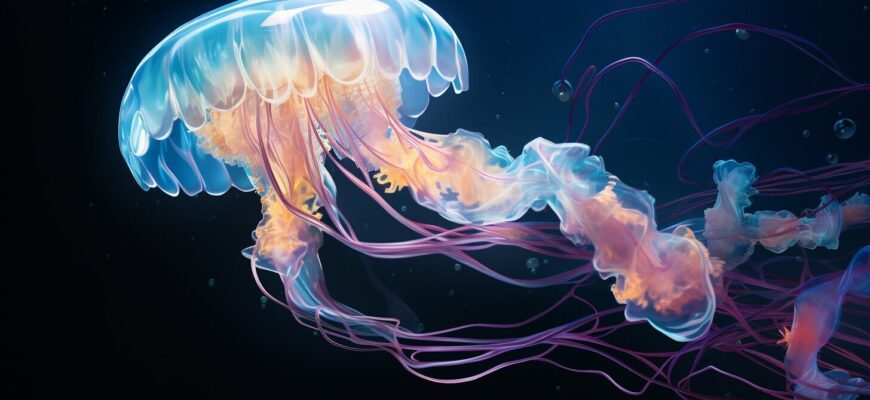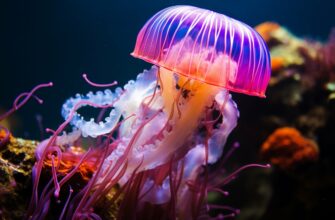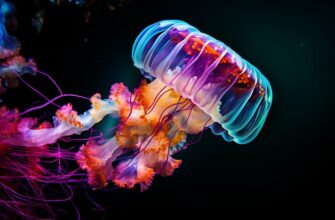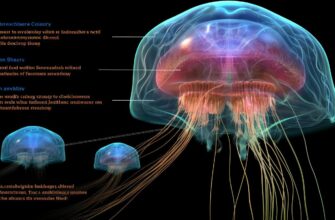Jellyfish are unique creatures that have fascinated humans for centuries. Many people assume that jellyfish have blood just like other animals, but is this really true? In this article, we will explore the biology of jellyfish and their nutrient transport system to understand more about the fluids inside these mysterious creatures.
So, do jellyfish have blood? The answer is no. Unlike vertebrates and many other invertebrates, jellyfish do not have a true circulatory system to transport oxygen and nutrients throughout their bodies. However, they do have a fluid that serves a similar purpose- hemolymph. This fluid is often mistaken for blood but has several key differences.
- The Biology of Jellyfish
- The Anatomy of Jellyfish
- The Circulatory System of Jellyfish
- The Unique Biology of Jellyfish
- The Fluids Inside Jellyfish
- The Nutrient Transport System of Jellyfish
- Other Circulatory Adaptations in Jellyfish
- FAQ: Common Questions about Jellyfish and Blood
- Do jellyfish have red blood?
- How does a jellyfish obtain oxygen without blood?
- Do jellyfish have a heart?
The Biology of Jellyfish
Jellyfish are one of the most unique creatures in the ocean, with a body structure that differs greatly from other animals. Unlike most animals, jellyfish have no bones, brain, or heart. Their body is made up mostly of water and their movements are determined by the ocean currents.
Despite their lack of traditional anatomy, jellyfish still have a circulatory system that allows them to transport nutrients throughout their body. However, this system is vastly different from those found in other animals.
The Anatomy of Jellyfish
Jellyfish have a relatively simple anatomy. Their body is made up of a bell-shaped structure called the medusa. This bell is filled with a gelatinous substance made mostly of water. At the underside of the medusa is the manubrium, which is a tube-like structure that connects to the jellyfish’s mouth.
The tentacles of jellyfish are used to capture food and are located around the edge of the bell. These tentacles are lined with thousands of small, stinging cells called nematocysts.
The Circulatory System of Jellyfish
Jellyfish have a unique circulatory system that relies on the movement of their body to transport nutrients. Instead of having a heart, jellyfish have a gastrovascular cavity. This cavity acts as both the digestive system and circulatory system.
When a jellyfish eats, the food is broken down in the gastrovascular cavity. The nutrients from the food are then transported throughout the jellyfish’s body by the movement of the cavity’s walls.
Jellyfish also have a simple nerve net that allows them to sense their environment and respond to stimuli, such as the touch of prey.
The Unique Biology of Jellyfish
The biology of jellyfish is incredibly unique and fascinating. Their lack of a traditional circulatory system and reliance on the gastrovascular cavity for nutrient transport has allowed them to adapt to their environment in a way that is most efficient for their survival.
Next, we will explore the fluids inside jellyfish and how they differ from blood found in other animals.
The Fluids Inside Jellyfish
While it may appear that jellyfish have blood, the fluid inside their bodies is actually called hemolymph. Hemolymph serves a similar function to blood in other animals, transporting nutrients and waste throughout the body and helping to regulate the jellyfish’s internal environment. However, there are several key differences between hemolymph and blood.
Unlike blood, which is contained within a closed system of vessels, hemolymph is found in the jellyfish’s gastrovascular cavity, a central chamber that also serves as the animal’s digestive system. The hemolymph is circulated throughout the cavity by muscular contractions and is absorbed by the body’s cells through diffusion. This system allows for efficient nutrient transport without the need for a traditional circulatory system.
Fun Fact: In some species of jellyfish, the hemolymph contains a pigment called luciferin, which enables the jellyfish to produce bioluminescent light.
The Nutrient Transport System of Jellyfish
Jellyfish are unique creatures that have adapted to survive without a traditional circulatory system, yet still manage to obtain and distribute the necessary nutrients throughout their body. Instead of blood vessels and a heart, jellyfish have a gastrovascular cavity that serves as their nutrient transport system.
| Gastrovascular Cavity | Function |
|---|---|
| The central cavity of the jellyfish’s body | Responsible for digestion and nutrient distribution |
| Branching canals that extend from the central cavity | Transport nutrients to different areas of the jellyfish’s body |
| The canals end in small, finger-like projections called gastric filaments | Responsible for absorbing nutrients from the surrounding water and distributing them to the rest of the body |
As water enters the gastrovascular cavity, nutrients are absorbed by the gastric filaments and transported to the rest of the body through the branching canals. The process is aided by muscle contractions and the movement of cilia, tiny hair-like structures that line the inside of the cavity.
Although jellyfish lack a traditional circulatory system, their unique nutrient transport system allows them to efficiently distribute the necessary nutrients throughout their body for survival.
Other Circulatory Adaptations in Jellyfish
In addition to their unique gastrovascular cavity, jellyfish have developed other adaptations to ensure efficient circulation and nutrient distribution in their fluid-filled bodies.
One of these adaptations is the use of cilia, small hair-like structures that line the jellyfish’s body. These cilia create water currents that help to circulate the jellyfish’s fluids and facilitate nutrient transport.
Jellyfish also use muscle contractions to maintain circulation in their bodies. By contracting their muscles, jellyfish can push their fluids through their gastrovascular cavity and distribute nutrients throughout their body.
These adaptations allow jellyfish to survive without a traditional circulatory system, and they have proven to be quite effective for these unique creatures.
FAQ: Common Questions about Jellyfish and Blood
As fascinating and unique creatures, jellyfish can spark a lot of curiosity and questions. Here, we address some of the most common inquiries related to jellyfish and their blood.
Do jellyfish have red blood?
No. Unlike most animals, jellyfish do not have red blood. Their hemolymph, which is often mistaken for blood, is transparent or slightly bluish in color due to the presence of a protein called hemocyanin.
How does a jellyfish obtain oxygen without blood?
Jellyfish obtain oxygen through diffusion, which is the movement of molecules from an area of high concentration to an area of low concentration. Their thin and permeable bodies allow for easy diffusion of oxygen directly into their tissues.
Do jellyfish have a heart?
No. Jellyfish do not have a heart or any specialized organs for pumping fluid. Instead, they rely on the movement of their bell-shaped bodies and muscle contractions to circulate their hemolymph or other fluids.









